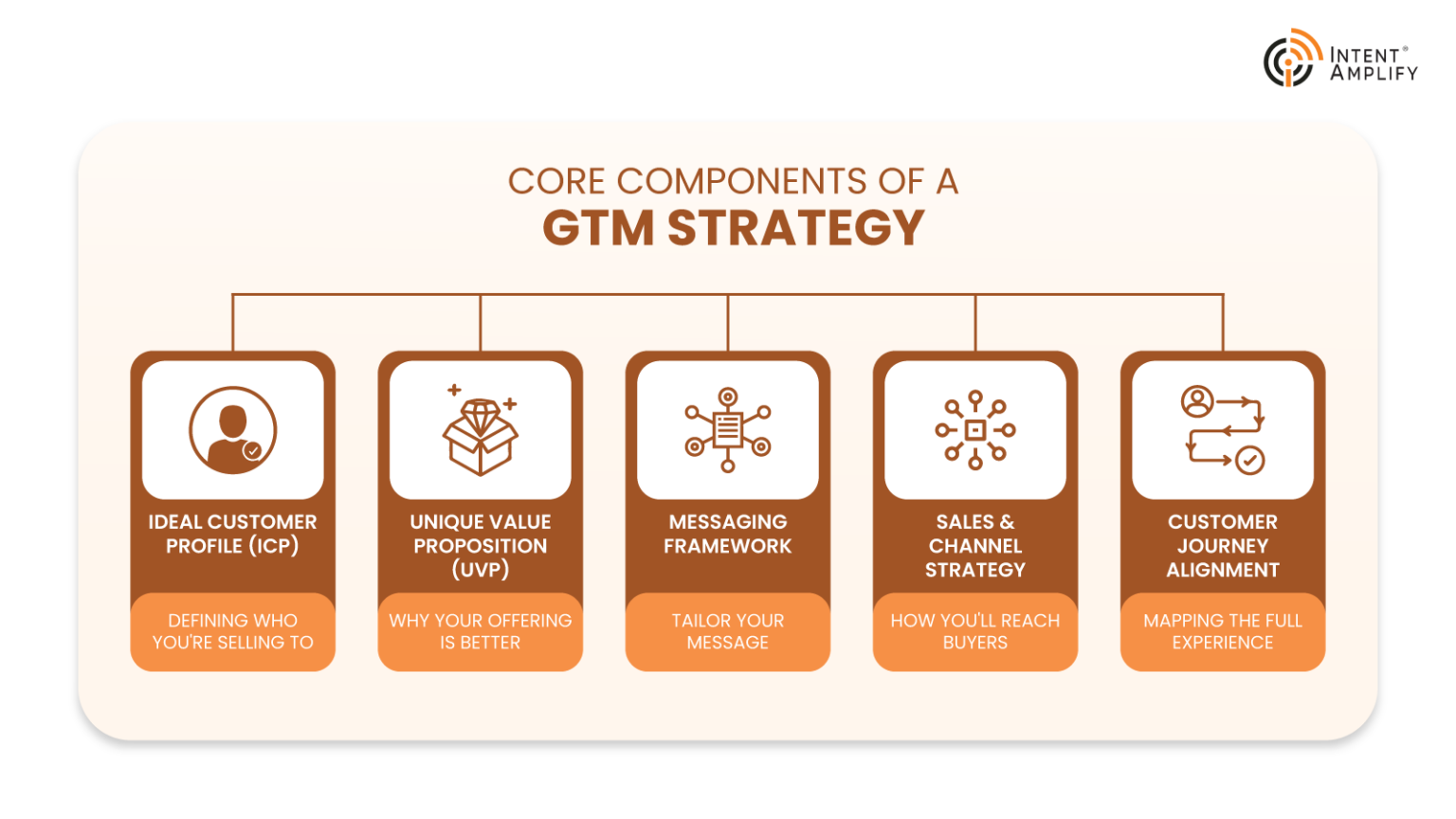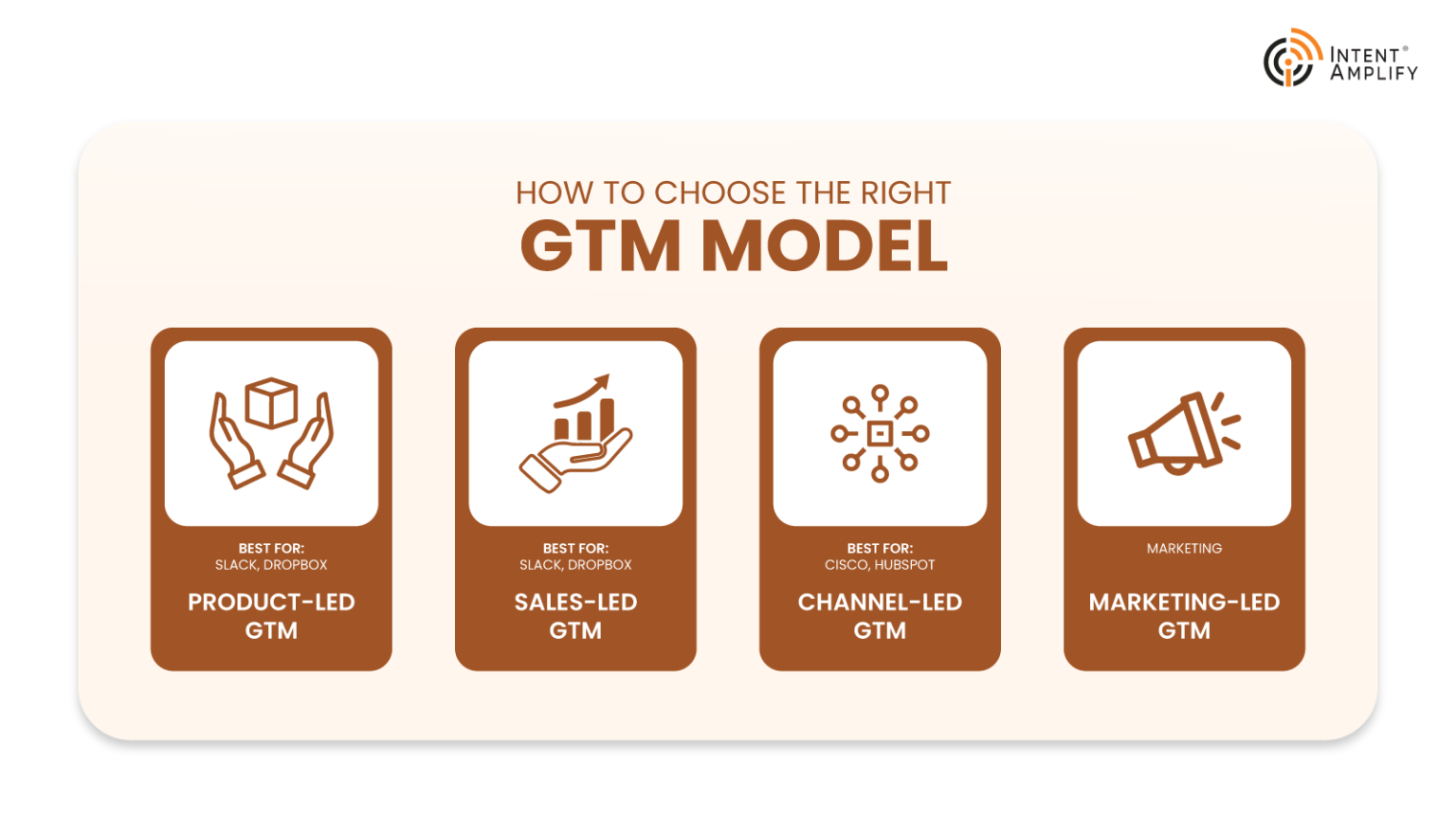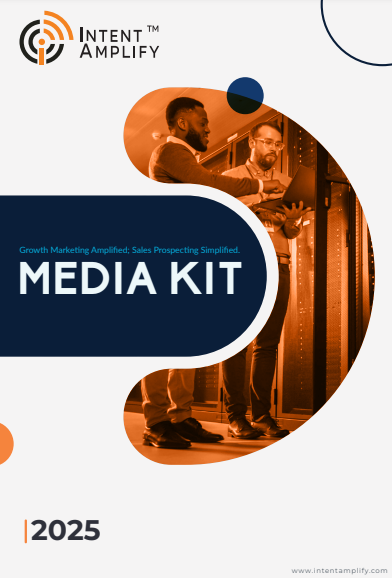
What Is a Go-To-Market (GTM) Strategy? Benefits, Stages, and Execution Tips for B2B Growth
- Last updated on: July 17, 2025
Going out to market with a new product or expanding into a new market without a solid Go-To-Market (GTM) plan is like navigating without a compass. You may be moving forward, but you’ll never know if you’re going in the right direction or how far astray you are.
“Go-to-market is not a strategy. It’s a process to win markets consistently.” — Sangram Vajre, Co-Founder, Terminus
A Go-To-Market strategy is more than just a marketing plan. It’s a coordinated roadmap that defines how you’ll reach your ideal buyers, position your solution, and create revenue traction from day one. Whether you’re rolling out a SaaS tool, expanding into a new segment, or repositioning your brand, a solid GTM strategy connects the dots between market research, messaging, sales enablement, and customer success.
Why is it so critical in 2025? Because the world is louder than ever. This article walks you through what a GTM strategy is, why it matters, its core components, and how to execute it effectively, without missteps that cost you time and pipeline.
What Is a Go-To-Market (GTM) Strategy? Definition by Intent Amplify
Intent Amplify defines Go-To-Market (GTM) strategy as a tactical action plan that outlines how a company will introduce its product or service to the right audience, using the right messaging, through the right channels, at exactly the right time. It’s not a one-size-fits-all document. A GTM strategy is shaped by your product, market conditions, customer expectations, and internal capabilities.
Think of it as the bridge between your value proposition and your ideal customer profile (ICP). It aligns cross-functional teams – product, sales, marketing, customer success around a unified goal: converting interest into sustainable revenue.
Studies show that companies with a well-defined Go-To-Market (GTM) strategy are 30% more likely to succeed.
What makes it different from a general marketing strategy? Marketing may focus on awareness and lead generation, but GTM zeroes in on market entry, buyer readiness, and revenue traction. It’s especially important when:
- Launching a new product
- Expanding into a new market
- Repositioning your brand
- Testing new pricing or packaging models
In B2B, where buying cycles are longer and decision-makers are more risk-averse, a strong GTM strategy can be the difference between early momentum and slow decline. It’s your strategic defense against wasted resources and missed opportunities.
Why GTM Strategy Is Essential in 2025
In 2025, launching without a GTM strategy isn’t just risky – it’s reckless. B2B buyers have more choices, higher expectations, and less patience. If you’re not meeting them where they are with a clear solution to their problem, someone else will – faster and louder.
The digital-first economy has raised the stakes. That means your messaging, content, and sales approach need to align long before human interaction begins. What’s more, buying committees are growing. It’s not just one decision-maker anymore—it’s a team. That makes personalized outreach and cross-channel orchestration critical.
GTM strategy helps you navigate all this complexity with purpose. It ensures that:
- You’re targeting the right market segment
- Your messaging resonates with different roles in the buying committee
- Your sales and marketing teams are moving in sync
A well-executed GTM plan eliminates guesswork and shortens time to value. In 2025, where speed and precision drive revenue, GTM isn’t optional – it’s a competitive advantage.
Key Benefits of a Strong GTM Strategy
A well-structured GTM strategy does more than get your product out the door – it ensures that it lands in the right hands, with the right message, at the right time. When executed effectively, it creates alignment, accelerates revenue, and minimizes risk. Let’s explore how.
- Faster Time to Revenue
With clear targeting and positioning, sales teams waste less time chasing the wrong leads. Your revenue engine kicks in earlier because the groundwork – ICP definition, buyer insights, and messaging—is already in place. - Alignment Across Teams
Sales, marketing, product, and customer success all play critical roles in a launch. A GTM strategy ensures these teams operate from a unified roadmap, reducing internal friction and duplicated efforts. - Market Fit Validation
By focusing early on real customer pain points and value delivery, you reduce the risk of launching something nobody wants. The GTM process sharpens product-market fit before major investment. - Scalability and Predictability
A repeatable GTM framework creates predictability. You know what works and why, which makes it easier to replicate success across new markets or products.
In short, a GTM strategy is your best shot at ensuring a strategic launch, not just a hopeful one.
Core Components of a GTM Strategy
A winning Go-To-Market strategy isn’t built on guesswork – it’s built on structure. While your GTM framework should flex to your business model, the core components stay consistent across industries and growth stages. These are the non-negotiables every effective GTM plan must include:
- Ideal Customer Profile (ICP)
Defining who you’re selling to is the foundation of GTM. Your ICP should include firmographics, buying behavior, pain points, and decision-making roles. A vague ICP leads to vague outcomes. - Unique Value Proposition (UVP)
Your UVP articulates why your offering is better, faster, or more relevant than the alternatives. It shapes your messaging, positioning, and sales playbook. A strong UVP turns heads and opens doors. - Messaging Framework
Tailor your message by persona, pain point, and stage in the buyer journey. Consistent, role-based messaging across channels helps build familiarity and trust. - Sales & Channel Strategy
Will you go product-led, sales-led, or partner-led? Define how you’ll reach buyers – direct sales, inbound marketing, marketplaces, or resellers, and equip those channels for success. - Customer Journey Alignment
Map out the full experience – from first touchpoint to post-sale. Your GTM should support not only acquisition, but also retention and advocacy.
When these five components are in sync, you’re not just entering the market – you’re entering it with intention.
7 Stages of a GTM Strategy Framework
A powerful Go-To-Market strategy doesn’t happen all at once – it’s a structured journey. Each stage builds upon the last, aligning strategy with execution. Here’s a proven 7-stage framework B2B companies use to launch effectively in 2025:
- Market Research
Understand your competitive landscape, industry trends, buyer behavior, and unmet needs. This stage sets the strategic context for every decision that follows. - Product-Market Fit Validation
Ensure your offering solves a real problem for a specific segment. This isn’t just about building a great product—it’s about building the right product for the right market. - Define Ideal Customer Profile (ICP)
Narrow your focus. Identify the accounts that are most likely to buy, stay, and grow. Define key firmographics, pain points, and buyer roles. - Craft Messaging & Value Proposition
Translate your solution into buyer language. Develop compelling, differentiated messaging tailored to each persona and funnel stage. - Channel Strategy & Enablement
Decide how you’ll reach buyers—sales team, self-serve, partners, or content-driven inbound. Equip each channel with content, training, and tools. - Sales & Marketing Alignment
Create shared goals, KPIs, lead qualification criteria, and SLAs. Collaboration here determines the speed and efficiency of pipeline growth. - Post-Launch Optimization
After go-live, gather feedback, analyze results, and refine your GTM. Test offers, messaging, and sales motions continuously..
Go-To-Market Execution Tips for B2B Success
Even the best strategy can fall flat without smart execution. Go-to-market success in B2B isn’t about doing more – it’s about doing the right things in the right order, with agility and alignment. Here are proven tips to bring your GTM strategy to life:
- Focus on Quick Wins First
Don’t wait for perfection. Prioritize channels, accounts, or regions where you can prove early traction. Early momentum builds team confidence and executive buy-in. - Align Revenue Teams Early
Bring marketing, sales, product, and customer success together from the start. Share goals, dashboards, and buyer insights. Alignment isn’t optional – it’s fuel for conversion. - Pilot, Then Scale
Test your messaging, content, and outreach on a small segment before launching broadly. Use real feedback to fine-tune offers and refine positioning. - Track Leading Indicators
Don’t wait for pipeline or revenue to measure success. Monitor early signals like engagement rates, demo requests, and sales velocity. Adjust in real time. - Build Feedback Loops
What sales learns in calls should shape marketing campaigns. What customers say post-sale should refine ICPs. Your GTM engine should never stop learning.
In B2B, GTM is not a launch event—it’s a continuous process. Execution excellence turns strategy into revenue.
Common GTM Mistakes to Avoid
Even with a solid strategy, GTM execution can go off course if you fall into avoidable traps. These missteps can cost you market share, budget, and internal trust. Here’s what to watch out for—and how to sidestep them.
- Skipping ICP Validation
Many teams assume they know their ideal customer. But assumptions aren’t strategy. Without validating your ICP through real buyer conversations, your messaging and outreach may miss the mark entirely. - Misaligned Teams
If sales and marketing define success differently—or worse, work in silos—your GTM engine will stall. Align on goals, definitions (like MQL vs SQL), and who owns what. - Launching Without Messaging Testing
Rushing to market without testing your value proposition across buyer personas is like shouting into a void. Test early and refine your messaging through feedback and A/B content runs. - Relying on a Single Channel
Even if email or paid ads worked last year, buyer behavior evolves fast. A modern GTM strategy must be multi-channel, integrating outbound, inbound, and partner strategies. - Ignoring Post-Launch Optimization
GTM isn’t a one-and-done effort. If you’re not measuring, learning, and iterating post-launch, you’re leaving growth on the table.
How to Choose the Right Go-To-Market Model
There’s no single GTM model that fits every B2B business. The “right” model depends on what you’re selling, who you’re selling to, and how your buyers prefer to engage. Choosing the wrong model can lead to bloated costs, missed targets, and low conversion. Let’s explore the most common models—and when to use them.
1. Product-Led GTM
In this model, the product markets itself. Think of freemium tools or SaaS platforms that let users self-onboard.
Best for: Low-friction digital products, tech-savvy SMB buyers. Example: Slack, Dropbox
2. Sales-Led GTM
Here, sales teams drive engagement and close deals through demos, relationship building, and consultative selling.
Best for: Complex solutions, long sales cycles, or enterprise deals.Example: Salesforce, Oracle
3. Channel-Led GTM
This model uses partners, resellers, or distributors to reach customers. It can accelerate scale without increasing internal sales headcount.
Best for: Global expansion, hardware, or low-margin products.Example: Cisco, HubSpot for Solutions Partners
Marketing-Led GTM
Marketing drives demand and nurtures leads until they are sales-ready. Often used in content-rich or ABM-driven strategies.
Best for: Awareness-driven categories or competitive markets.Example: Gong, Drift
How to Choose?
Evaluate your buyer journey, sales complexity, and product maturity. Some companies even blend models (e.g., product-led + sales assist). The key is to align your GTM model with buyer expectations and internal capabilities.
How Intent Amplify Supports Go-To-Market Success?
Building and executing a successful Go-To-Market strategy takes more than ideas – it takes precision, alignment, and the right support system. That’s where Intent Amplify comes in. We help B2B companies bridge the gap between strategy and results with tailored services that accelerate time-to-revenue and increase market impact. Whether you’re launching a new product, entering a new vertical, or scaling globally, our GTM support ensures every step is grounded in buyer intent and market insights.
Here’s how we help:
- ICP & Market Research: We validate your target personas and segments using real-time data, not assumptions.
- Value Messaging & Positioning: Crafting tailored messaging that resonates across the buying committee and stands out in crowded markets.
- Outbound & ABM Campaigns: Full-funnel execution that aligns marketing and sales motions to engage, nurture, and convert.
- Feedback Loops & Optimization: We don’t stop at launch. Our team continuously refines messaging and strategy based on campaign performance.
Whether you’re starting from scratch or need to refine your current GTM playbook, we provide the expertise, execution, and strategic insight you need to win your market.
FAQs
Q1. What is a Go-To-Market (GTM) strategy in simple terms?
A GTM strategy is a roadmap that outlines how you’ll bring a product or service to market. It covers your target audience, messaging, channels, sales approach, and success metrics.
Q2. How is a GTM strategy different from a marketing strategy?
Marketing strategy focuses on brand awareness and lead generation broadly. A GTM strategy is more focused—it aligns product, marketing, sales, and customer success to drive a successful launch or market entry.
Q3. Who owns the GTM strategy in a B2B company?
Ownership is typically shared between marketing, product, and sales leadership. However, marketing often leads the planning and coordination, while product ensures fit and sales drives execution.
Q4. When should I create a Go-To-Market strategy?
Whenever you’re launching something new—a product, a service, a feature, or even entering a new market. It’s also valuable for repositioning or shifting your ICP.
Q5. How long does it take to implement a GTM strategy?
It depends on complexity. A basic GTM motion may take 4–6 weeks, while more complex, multi-team strategies (like ABM or international expansion) can take 3–6 months.






